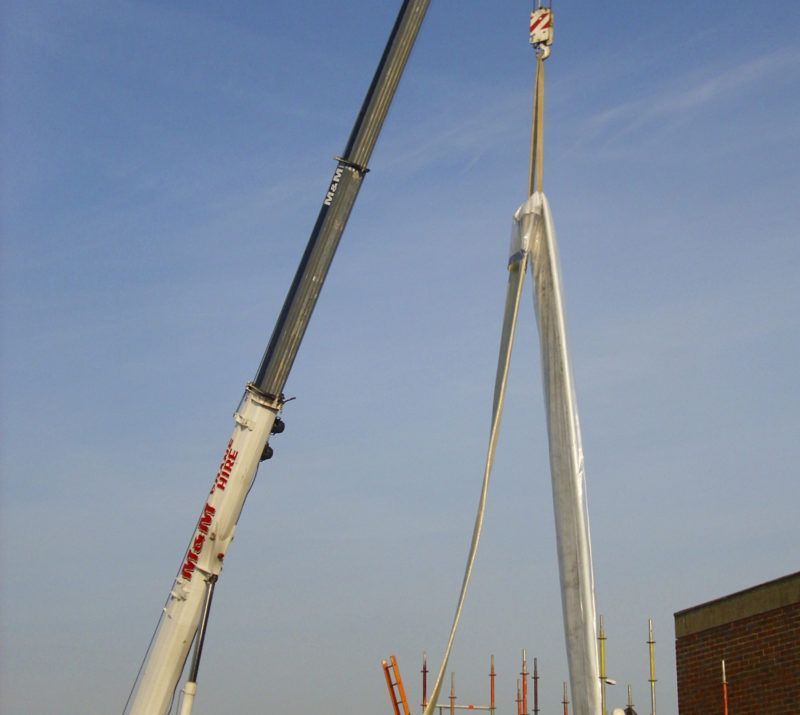Fire Service Pipes at Gatwick Airport renewed by Lanes for Drains

Lanes for Drains engineers have helped ensure fire fighting teams at London Gatwick Airport are at optimum readiness by renewing pipes that supply them with water.
Given the priority placed on safety at the UK’s airports, great care is taken to make sure critical facilities are regularly checked and kept in good repair.
The work at the UK’s second busiest airport, near Crawley, West Sussex, involved the inspection, cleaning and renewal of two cast iron pipes, both 600mm in diameter and 145 metres long.
The pipes run from a holding lagoon under the two carriageways of the A23 and into a pumping station within the airport perimeter.
Lanes for Drains was brought into this work package by the Principal Contractor Osborne who recognised the requirement for specialist contractors to achieve what their client GAL (Gatwick Airport Ltd.) required.
One of the main requirements was to ensure minimal day-to-day disruption to the fire team at Gatwick, along with a quick, efficient, innovative and long lasting solution that would guarantee a constant supply of water if the need arose.
Engineers from Lanes for Drains’ depot at Sevenoaks, Kent, carried out a CCTV survey of the pipes. Using a sophisticated ROVVER robotic crawler camera, they recorded high definition colour footage inside the pipe.
Working with the surveillance team, Lanes for Drains jetting engineers, also based at the Sevenoaks depot, used a highly powerful jet vacuumation tanker to clean the pipes.
Once this work was complete, the pipes were rehabilitated by Lanes for Drains’ Reline team, based in Manchester.
First, five local structural patches were fitted in key areas to prevent water penetration. Then, both pipes were fully relined, using a technique called hot cure lining.
This involved the pipes being lined with a continuous polyester sleeve, impregnated with resin. Once in place, the pipe is filled with hot water, which cures the resin and creates a smooth, strong, structurally sound lining.
A key challenge was the way the pipes made several 45 degree turns on their run from the lagoon to the pumping station.
Jim Wardman, Project Manager for Lanes Reline said: “Our trenchless ‘no-dig’ technology was perfect for this project.
“The A23 is one of the busiest major trunk roads in the country. Opting for an open cut trench repair would have caused severe disruption for the public and airport operations.
“By carrying out a no dig renovation the road, and other areas where access would have been difficult, were not affected.
“The hot cure lining technique was ideal because it’s well suited to longer pipe runs and can accommodate the turns we were dealing with.”
Matthew Wilson, Osborne Project Manager said: “The need for co-operation and an efficient working team was never more evident than when working in the wet well of the pumping station.
“The wet well was not only the launch end for the liner but also a key area of other project activities.
“Working closely with Lanes allowed accurate and effective programming for the works, whilst ensuring the operational impact on the whole scheme was minimised.
“The site team from Lanes, headed up by Simon Haughton, were very responsive to the constraints faced and had a reassuring attitude to behavioral safety.”
Hot cure lining is just one of several ‘cure in place pipe’ (CIPP) repair techniques Lanes for Drains regularly uses.
Others include cold cure lining, where the liner hardens in ambient temperature, and UV lining, which uses ultra violet light, delivered by a robotic crawler, to quickly and effectively cure the liner.
The renovation work carried out by Lanes for Drains has given the two water pipes at London Gatwick Airport an additional life span up of to 30 years.







